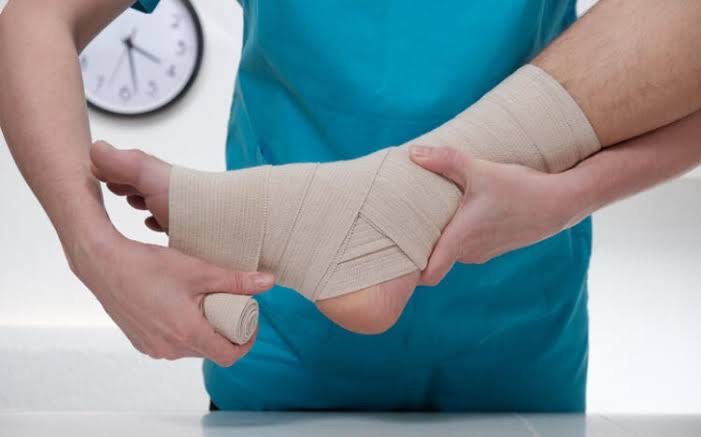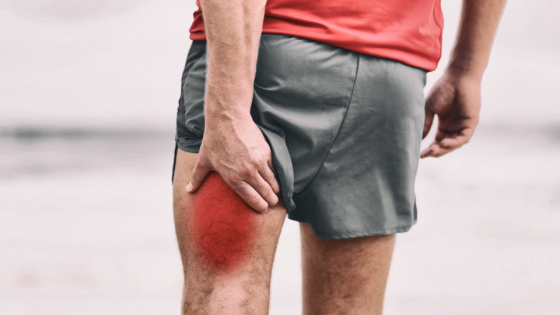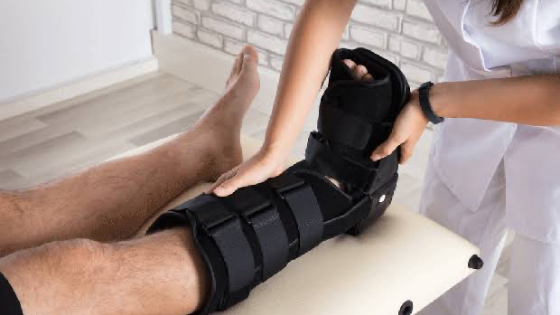The footy season is coming to a head and you may be suffering from some of the common injuries. Australian rules football is a physically demanding sport that can result in various injuries. 10 of the most common football injuries, how to treat them;
- Sprained ankle
- Hamstring strains
- Knee injuries (such as ACL tears)
- Concussions
- Shoulder dislocations
- Groin strains
- Shin splints
- Dislocated fingers
- Calf strains
- Rib fractures
Sprains, strains and fractures
A sprain, strain, and fracture are three distinct types of injuries that affect different structures in the body. Here’s an overview of the key differences:
Sprain:
- Definition: A sprain occurs when the ligaments, the bands of tissue that connect bones to each other, are stretched or torn.
- Cause: Sprains usually happen due to sudden twisting or wrenching movements that put excessive force on a joint.
- Common Locations: Sprains most commonly affect ankles, wrists, and knees.
- Symptoms: Symptoms may include pain, swelling, bruising, and limited joint movement.
Strain:
- Definition: A strain refers to an injury to a muscle or a tendon, which is a fibrous tissue that connects muscles to bones.
- Cause: Strains often occur during activities that involve overuse, overstretching or overexertion of muscles.
- Common Locations: Strains frequently affect the muscles of the back, neck, legs, groin, glutes, and shoulders.
- Symptoms: Symptoms may include muscle pain, muscle weakness, muscle spasms, and difficulty moving the affected area.
Fracture:
- Definition: A fracture, commonly known as a broken bone, happens when there is a partial or complete break in the continuity of a bone.
- Cause: Fractures typically result from trauma or a significant force applied to the bone.
- Common Locations: Fractures can occur in any bone but are most common in arms, wrists, legs, and ankles.
- Symptoms: Symptoms may include severe pain, swelling, deformity, limited range of motion, and an inability to bear weight on the affected area.
Sprain, strain and fracture injuries are prevalent in football due to the quick changes in direction, running, jumping and contact such as tackling involved in the sport. The first port of call for any sprain or strain is RICER;
- Rest: Avoid putting weight on the injured joint and try to rest as much as possible. Use crutches if necessary to keep weight off an injured ankle or knee;
- Ice: Apply ice to the affected area as soon as possible to help reduce swelling and pain. Use an ice pack or wrap ice in a thin towel and apply it to the ankle for 15-20 minutes every 2-3 hours for the first 24 to 72 hours;
- Compression: Wrap the ankle with an elastic bandage or compression wrap to help control swelling. Start at the below the injured joint and work your way up, applying even pressure. Make sure the wrap is snug but not too tight to restrict blood flow;
- Elevation: Elevate your injured joint above the level of your heart whenever possible. This can help reduce swelling by allowing fluid to drain from the injured area;
- Refer: Once the initial swelling and pain have subsided, it’s important to gradually start restoring the joint’s range of motion, strength, and stability. Refer to a healthcare professional or myotherapist for guidance on specific exercises and rehabilitation protocols.
Fractures and dislocations
Fractures can occur in various bones, including the fingers, hands, wrists, collarbones, and legs, as a result of collisions, tackles, or falls. Rib injuries: Impact during tackles or collisions can cause rib fractures or bruising, leading to pain and discomfort. Any fractures or dislocations must be treated immediately with first aid. The limb should be immobilised and the patient must seek medical attention as soon as possible.
Falling awkwardly or being tackled with force can lead to shoulder dislocations. These injuries occur when the shoulder joint comes out of the joint socket.
- Immobilise: While waiting for medical help, try to keep your arm as still as possible. Avoid any movements that could worsen the injury.
- Seek Help: Do not try to pop the shoulder back into place yourself. Instead, seek immediate medical assistance
- Ice: Applying an ice pack wrapped in a cloth to the affected joint, can help reduce swelling and provide some pain relief.
- Support: in the case of a shoulder dislocation, use a sling or a makeshift sling (such as a cloth or a scarf) to support the arm and keep it in a comfortable position.
Once you receive medical attention, a healthcare professional will evaluate the injury and decide on the appropriate treatment. They may gently maneuver the shoulder joint back into place, a procedure called a “closed reduction.” After the shoulder is back in place, you may be given pain medication, and you’ll likely need to wear a sling for a period to allow the shoulder to heal properly.
Rehabilitation exercises and physical therapy may be prescribed to strengthen the area and prevent future dislocations. Follow your healthcare provider’s instructions closely and attend any follow-up appointments to ensure a full recovery and reduce the risk of re-injury.
Concussions
Head injuries and concussions can occur due to collisions, tackles, or falls during play. The sport’s physical nature and high-impact collisions increase the risk of head injuries.
The treatment for a concussion involves both physical and cognitive rest to allow the brain to heal. Here are some guidelines for the appropriate treatment of a concussion:
- Rest: Physical and cognitive rest is essential in the early stages following a concussion. This means avoiding activities that can exacerbate symptoms and worsen the condition. This includes refraining from physical exertion, sports, exercise, and activities that require concentration and mental effort.
- Medical Evaluation: It is crucial to seek medical evaluation after a concussion to assess the severity of the injury and rule out any complications. A healthcare professional, such as a doctor or a concussion specialist, can evaluate the symptoms, perform necessary tests, and provide appropriate advice and management strategies.
- Gradual Return to Activities: Once the initial symptoms have improved, a step-by-step, gradual return to activities can be initiated. This typically involves a structured and supervised process where the individual gradually increases physical and cognitive exertion. It’s important to follow the guidance and recommendations of a healthcare professional throughout this process.
- Symptom Management: Various symptoms can accompany a concussion, including headaches, dizziness, nausea, sensitivity to light or noise, difficulty concentrating, and mood changes. Managing these symptoms may involve over-the-counter pain relievers for headaches, getting adequate sleep, avoiding activities that worsen symptoms, and practicing stress management techniques.
- Support and Monitoring: It can be beneficial to have a support system in place during the recovery process. Inform family, friends, teachers, coaches, and colleagues about the concussion to ensure they understand the need for adjustments and support during the healing period. Regular monitoring of symptoms and progress is crucial, and communication with healthcare professionals can help guide the recovery process effectively.
- Avoiding Re-injury: It’s important to take steps to prevent further head injuries during the recovery phase, as sustaining another concussion before fully healing can lead to more severe complications. Follow any guidelines provided by healthcare professionals, and gradually return to sports or activities only when cleared by a medical professional.
Remember, each concussion is unique, and the treatment plan may vary depending on individual circumstances and the severity of the injury. It’s essential to consult with a healthcare professional who specializes in concussions for a proper evaluation, diagnosis, and personalized treatment recommendations.
If you’ve experienced any of these or other injuries during sport, it’s best to seek medical advice. If you have been referred for physical therapy, Myotherapy can help you rehabilitated and back playing sport.
ALM Remedial servicing the Yarra Valley, Lilydale, Seville, Wandin, Dandenong ranges areas.





